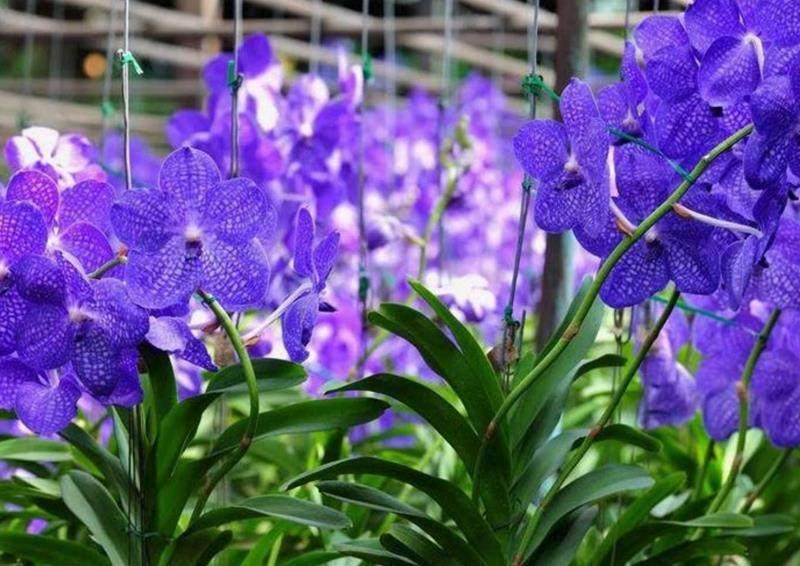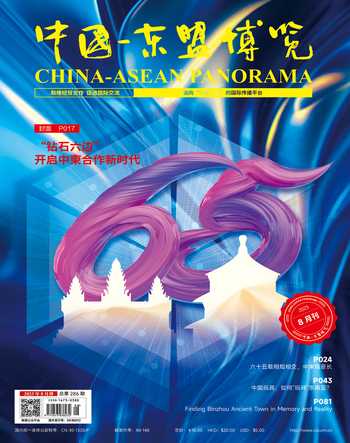Guangxi’s Flower and Seedling Industry Sees Business Opportunities in ASEAN Market
2023-09-05LiHongtingTranslatedbyLiWanrong
Li Hongting Translated by Li Wanrong


The flower industry is the only agricultural sector whose products arent subject to agricultural tariff-rate quotas worldwide. It is known as a technology-and-labor-intensive “sunrise industry” of high input, high output, and high efficiency. With social progress, rising needs for urban and rural greening, as well as peoples changing consumption concepts, the flower and seedling industry sees dramatically increasing demands for flower products and therefore boasts broad market prospects.
Guangxi has gradually built a flower industry chain with local features by virtue of advantageous natural environmental conditions and rich wildflower resources. In order to develop and upgrade the industry, exploring the ASEAN market will be a major focus in the future.
Unique advantages fuel the vigorous industry development
Although China is one of the earliest countries in the world to grow flowers, its flower industry is launched relatively later than advanced flower-producing countries such as the Netherlands, Japan, and Israel. In the 1980s, the Chinese government officially put forward to develop the flower industry, which later put it on a fast track. Since 2006, China has had the worlds largest flower planting area.
As a major agricultural region in China, Guangxi enjoys favorable geographical location and natural conditions, as well as preferential policies including the large-scale development of the western region in China and opening up in coastal and border regions. In this context, the flower and seedling industry in Guangxi has made gradual progress in recent years.
According to statistics, Guangxi has approximately 8,562 species of wild vascular plants, ranking third in China. It also abounds with precious flower germplasm resources. There are 50 rare wildflower species under national-level protection, of which 34 species are identified in the Chinese Plant Red Data Book. Zhou Jinye, a researcher at the Flower Research Institute of Guangxi Academy of Agricultural Sciences, stated in his research that 6 families of Theaceae, Ericaceae, Orchidaceae, Magnoliaceae, Liliaceae, and Gesneriaceae account for a significant proportion of Guangxis wildflower resources. They have laid a solid foundation for research and development of the subtropical flower industry in Guangxi, thus playing an essential role in the growth of the local economy, industries, and farmers income.
Nowadays, Guangxi has taken proactive moves to utilize local flower and seedling resources, thereby fostering related industries to become new engines of economic growth. As of 2022, the flower growing area in Guangxi has reached 1.2 million mu (80,000 hectares), with an output value exceeding 23 billion yuan. More than 2,000 enterprises with 480,000 employees are engaged in the flower industry. Guangxis flower brands have built a reputation in China, featuring Golden Camellia, Jasmine, Osmanthus, Buddhist Pine, Orchid, and Gui-style Bonsai. Thus, the flower industry chain with local features has been taking shape.
Hengzhou City, Guangxi, also known as Chinas “home to jasmine,” is the largest nationwide jasmine plantation and production base. With over 330,000 flower farmers and 180 flower tea enterprises, the city yields cut flowers of more than 100,000 tons annually, contributing to a 14.38-billion-yuan annual output value of jasmine flowers and tea. In the past few years, the jasmine industry has gradually become a remarkable business card of Guangxi and developed into an industrial cluster with great additional value that incorporates potted plants, food, tourism, health care, and other fields.
Orchidaceae is also one of the most abundant wildflower resources in Guangxi. The orchid industrial zone, with Nanning and Liuzhou at its center, covers Baise, Hechi, Yulin, and other cities. Guangxi has built orchid production bases, high-quality seedling breeding bases, banks of plant genetic resources, new variety selection and breeding bases, orchid cooperation and exchange centers, and orchid trading centers. In addition, the Buddhist pine industry in Beihai and the osmanthus industry in northern Guangxi are also booming. “Ten-mile Flower Corridor” and other demonstration zones for comprehensive production and sales of flowers and seedlings have also emerged in Guangxi. Thus, its clear that the market of flowers, seedlings, indoor flowers, and small potted plants in Guangxi keeps growing.
To develop the flower and seedling industry, Guangxi has also actively cooperated with Yunnan, Guangdong, Fujian, Taiwan, and other leading flower-growing provinces to learn advanced technologies and experience.
ASEAN market has enormous potential
The flower and seedling industry in Guangxi is maintaining a good momentum of development, yet facing a lack of self-owned brands, insufficient industrial innovation abilities, and other issues. Hence, expanding into the ASEAN market and strengthening industrial cooperation with ASEAN countries provide great opportunities for Guangxi to upgrade the industry.
The China-ASEAN flower and seedling market has a large capacity, great potential, and broad development space. Among ASEAN countries, Vietnam, Indonesia, and Singapore are major importers of flowers. Since Singapore, known as the garden city, emphasizes the importance of landscaping, its high demand for flowers generates an annual import value of over 100 million yuan. In 2015, Chinas flower and seedling industry reached a scale of 500 billion yuan. Its products were mainly exported to ASEAN countries, of which Vietnam, Malaysia, and Singapore were the biggest destinations. In 2019, a large number of Chinese yellow phalaenopsis orchids were exported to Vietnam and other ASEAN countries, with a year-on-year growth of 15% in the production and sales volume respectively; and variegated flowers were largely sold to Vietnam, Singapore, and Thailand.
As the frontier of China-ASEAN cooperation, Guangxi enjoys a solid foundation for industrial cooperation between the two sides. At present, based on Beibu Gulf International Gateway Port, inland ports of Xijiang River, Dongxing Border Port, and Youyiguan Border Port, Guangxi has established a convenient logistics network connecting ASEAN countries. It has not only opened multiple international air routes to ASEAN countries, but also continuously made breakthroughs in projects such as the China-Laos Railway and the rail-sea intermodal trains via the New Western Land-Sea Corridor. Moreover, Guangxi has also put up platforms for flower exhibitions and sales, including China-ASEAN Expo Forest and Wood Products Exhibition, China-ASEAN Expo Agriculture Exhibition, Guangxi Spring Festival Flower Fair, and Guangxi Flower and Seedling Trade Fair, thereby creating more channels for exchanges and cooperation in the China-ASEAN flower and seedling industry.
Riding the tide of the China-ASEAN Free Trade Area (FTA) and the entry into force of the Regional Comprehensive Economic Partnership (RCEP) among all members, Guangxis flower and seedling industry is more likely to succeed in the ASEAN market. The fruitful results of the FTA have firstly benefited agriculture. As a major agricultural sector and a flourishing industry in China and ASEAN countries, the flower industry has been in full bloom.
Meanwhile, opportunities for industrial cooperation extend beyond the retail sector. The labor-intensive flower industry creates a large number of jobs for planting, cultivating, caring, and packaging. And the preservation of flower products places heavy demands on the efficiency of the logistics and packaging industries, which encourages them to cultivate technical talents for win-win cooperation in upgrading the flower and seedling processing industry.
On July 16, 2023, the government of Guangxi unveiled the Guangxis Three-year Action Plan for Building Trillion-yuan Forestry Industry (2023-2025). It stated that Guangxi plans to build modern flower industry parks in Nanning, Guilin, Beihai, and other cities, establish Guangxi (ASEAN) flower and seedling trading markets and regional flower trading markets, and cultivate flower products with local features and bonsai art products including the Buddhist pine. In the foreseeable future, Guangxi will continuously leverage its own advantages to introduce more aromatic quality flowers and more lush green seedlings to ASEAN countries.
